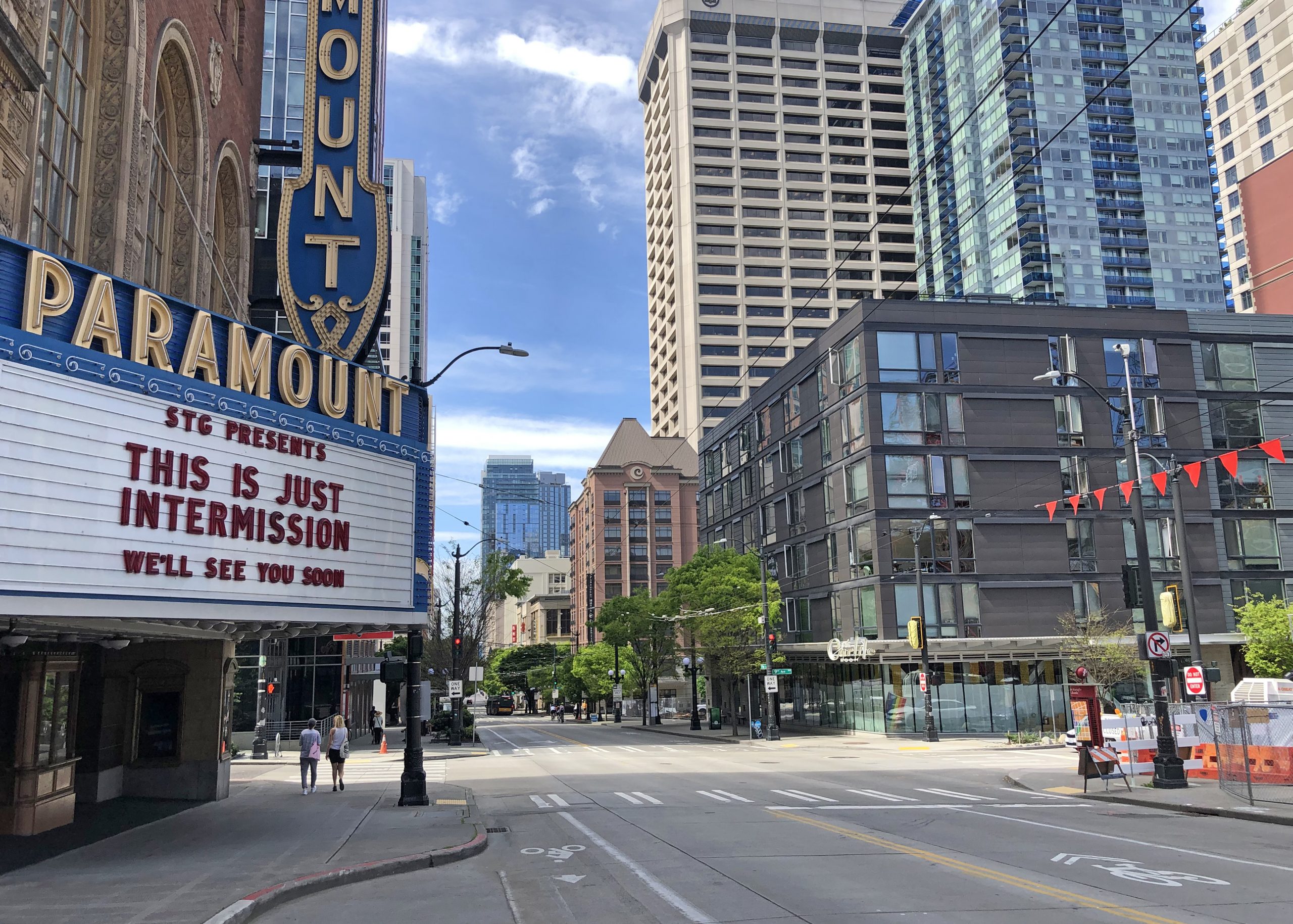News
Downtown Seattle brought to ‘screeching halt’ by virus
Posted on

This story was originally published by the Associated Press on May 8, 2020.
By Lisa Baumann
SEATTLE (AP) — With the U.S. unemployment rate spiking to levels last seen during the Great Depression, people in Seattle have felt some of the deepest impacts as the first city to grapple with a major COVID-19 outbreak.
Jon Scholes, president and CEO of the Downtown Seattle Association, said many employees began working remotely March 5, bringing a decade of growth “to a screeching halt.”
The association this week estimated at least 57,000 of some 330,000 jobs downtown have been shed since March 1. Last week, hotel revenue was down 95%, according to the association, and automated vehicle traffic counters have been showing daily counts that are down by as much as half of pre-COVID levels.
The region also saw the largest increase in the unemployment rate in the nation in March, the association said, based on federal Bureau of Labor Statistics data. Over $2.1 billion has been paid to people seeking jobless benefits in Washington state, with more than 1.4 million claims filed since early March.
The state’s stay-home order is currently in effect through May but officials are beginning a phased-in approach to loosening restrictions. Scholes doesn’t see a quick path to recovery for many downtown businesses even when restrictions are loosened, partially because so many jobs can be done remotely and large businesses such as Amazon have told employees they can work remotely into the fall.
“I think it’s going to be a long, slow climb out. Not a matter of months but a matter of years really,” Scholes said.
There’s growing anxiety among local business owners and employees with everyone watching the clock run down on the federal 8-week Paycheck Protection Program, he said, if they received it.
Avout van der Werf, owner of two bars in the downtown area, said when the stay-home order went into effect he knew he couldn’t afford to keep everyone on payroll, so he laid off 25 employees and closed the bars.
In mid-April he thought it was time to send a different message so he reopened Shorty’s, known for cocktails, pinball and Vienna beef hotdogs, rehired a half dozen workers and started offering take-out.
“The numbers make absolutely no sense … but for people to see the lights on and hear the music and they can at least say hello, I think it’s hopeful,” he said.
He said businesses like his that were well-positioned to handle one stay-home order probably won’t be able to make it through another one.
Scholes said more action is needed at the federal level to get cash to companies so they can keep employees on the payroll and lessen the need for rent relief and other such programs.
Michael Maione, owner of Some Random Bar in the downtown area, laid out his business financials on Facebook, saying even if the bar/restaurant can reopen with 50% occupancy in June, his business will have lost over $31,000 even while remaining open for take-out since the COVID-19 crisis began.
“There’s not a lot of small businesses in America that have $31,500 just sitting in their checking accounts to lose,” he said. “And that doesn’t even include the fact that we’re not paying ourselves.”
He said he has no plans to close in part because of successful GoFundMe campaigns and hope for relief through grants and loans.
Scholes said when virus treatments and a vaccine are available, he thinks people will return.
“The longer-term trends are really in favor of people wanting to be in urban dynamic places to work and play,” he said. “But they want to do that safely.”